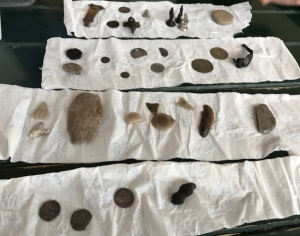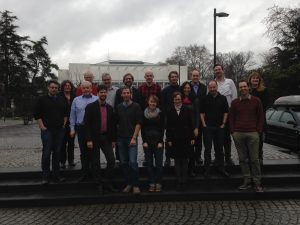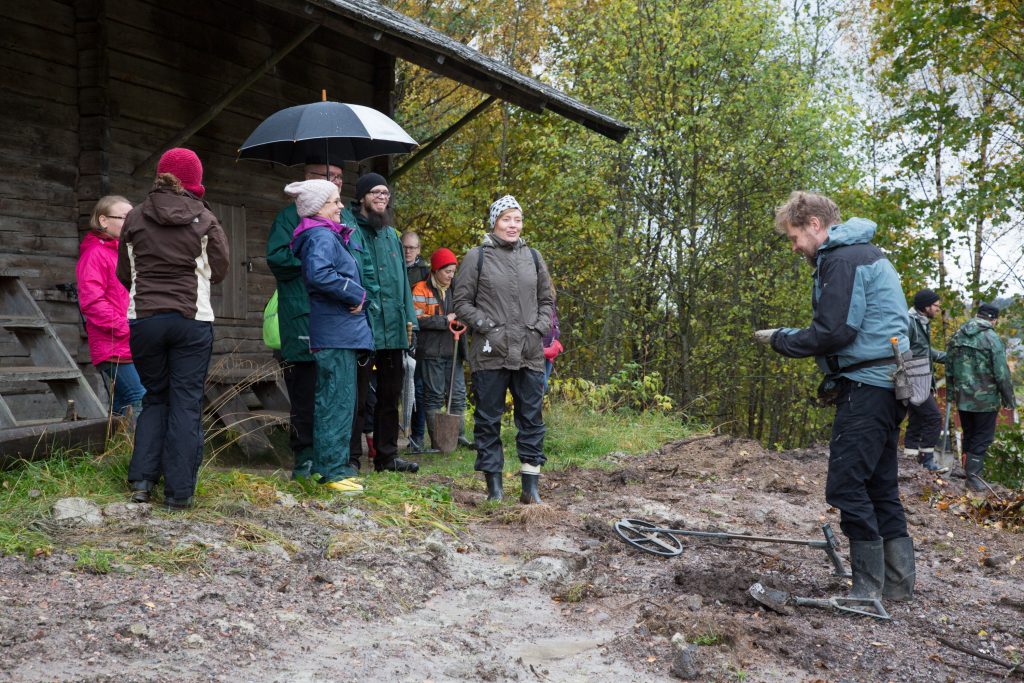In the past few decades an increased number of archaeological finds found (and reported) by the public, especially hobbyist metal detectorists, has been a phenomenon in many European countries. In order to manage this growing number of archaeological finds, heritage authorities have been developing supplementary tools to respond to these conditions. Many projects have been set up with the objective of developing digital databases for recording archaeological finds made by members of the public. These projects include the public in the recording processes. With that same objective, the SuALT Project is linked to a wider international context of similar projects which have been carried out in other European countries.
To locate SuALT Project better, here we introduce some of these European relative projects, with which the SuALT Project collaborates closely.
Portable Antiquities Scheme (PAS)
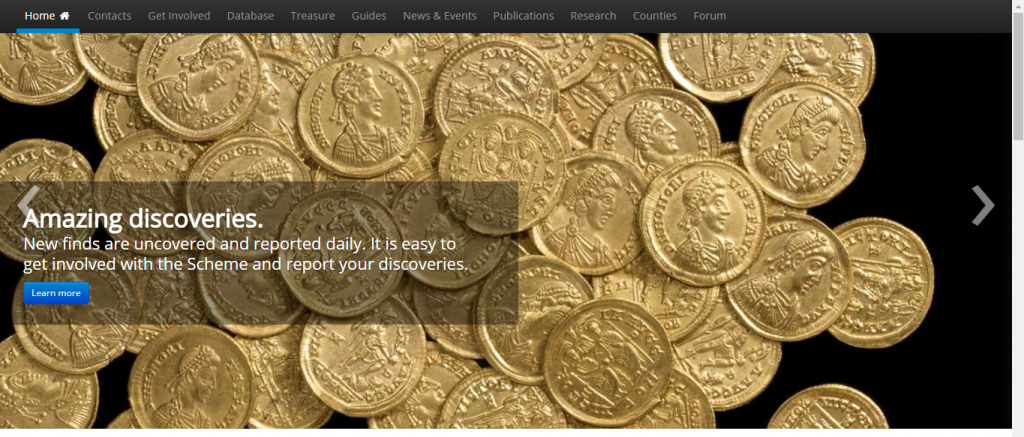
Portable Antiquities Scheme webpage
The aim of Portable Antiquities Scheme (PAS) has been to advance knowledge of history and archaeology. It was created to encourage and to support members of the public to report archaeological finds. Also, to provide information to the public about the correct handling of finds, and their legal obligations. Eventually, PAS led to a standardised comprehensive national system for recording finds covering England and Wales.
The first finds recording was made in 1998. Then, the next year the database went online. Since then, PAS has grown a lot. Now, PAS is supported by the UK’s DCMS (the Department for Culture, Media & Sport), and directed by the British Museum. The staggering number of reported objects is over 1,3 million. The finds data has been used as a resource in over 600 different level research projects. PAS offers to users a large range of support and information, for example guidelines legal obligations, best practice and so on. Also, regional Finds Liaison Officers are a part of PAS to help and support public in recording finds, to provide information, and to advice the best practice. Read more about PAS here.
PAS has been a benchmark project that has guided a development of following archaeological finds recording database projects.
MEDEA in Flanders
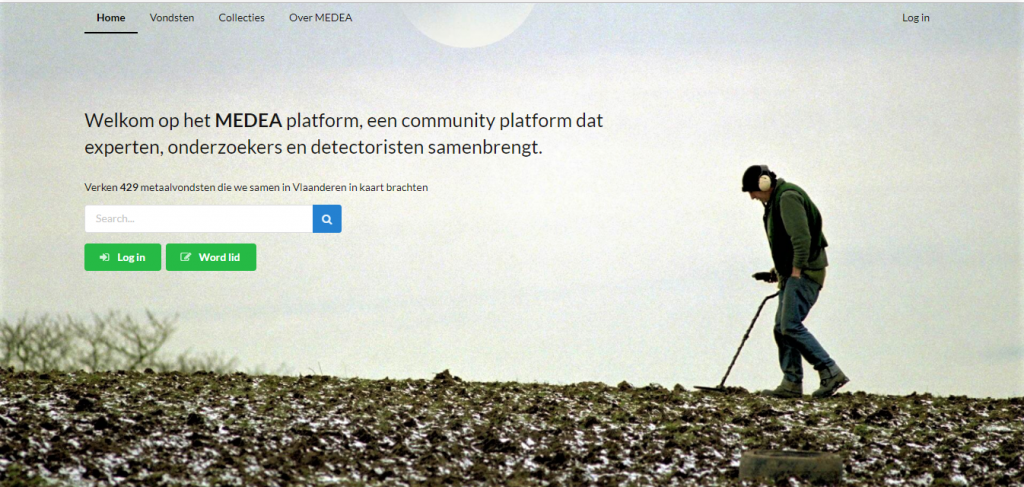
MEDEA webpage
Metal detecting as a hobby became legal in Flanders, Belgium, in 2016, although it has been unofficially tolerated before that. Changed legislation has set new requirements for archaeological heritage management in Flanders. Therefore, MEDEA is expected to complement this new situation. MEDEA has an aim to built build a new infrastructure in altered circumstances. The project thus develops new routines to heritage work by engaging metal detector hobbyist, and encouraging them to record their finds.
MEDEA is a collaborative project based at the Vrije Universiteit Brussel in Belgium. It was initiated 2014, then launched online in the beginning of 2017. MEDEA database is currently in a beta stage, and the development is progressing. At the moment, the database has over 400 reported finds to search and the number is growing. If you are keen to learn more about MEDEA, a recommendation is to read this and this.
PAN – Portable Antiquities of the Netherlands
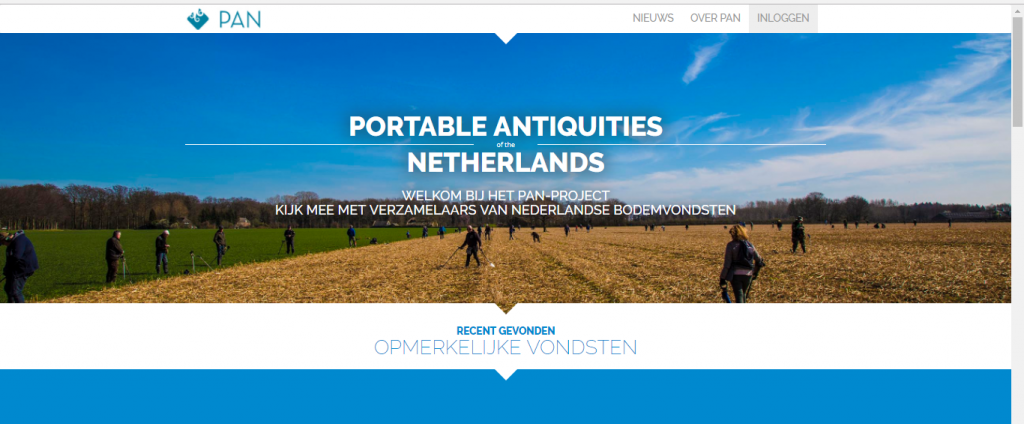
Homepage of PAN
PAN is a recent platform developed in the Netherlands. As the most recent of these similar European database projects, PAN is a collaboration of numerous partners. It is coordinated by the Vrije Universiteit Amsterdam. PAN has been initiated in 2016. An online platform has become live in 2017. Already, thousands of finds are recorded in the database.
PAN has already received recognition for being nominated as one of the finalists of open data award in the Netherlands this year.
DIME – Digitale Metaldetektorfund
DIME was initiated in 2016. In Denmark, an attitude and approach towards metal detecting is generally positive and liberal. There are several reasons support this approach, which has been successful in Denmark. The majority of metal detectorists are considered very competent and highly motivated. Thus, their contribution to heritage and archaeological work is valued. Click here to read more.
DIME will go online next year. Users have been in the centre of the development process of DIME. An aim has been to create an easy access database, not only via a stationary computer, but that also can be fluently used on the move. Therefore, recording finds to the database is possible via a mobile device app. This mobile app facilitates recording data in the field, for example, finds location recording is based on GPS coordinates, which are determinated by the phone’s actual location. DIME will an interesting addition to a set of finds recording databases.
Shared objectives
Clearly, every database must adapt to meet legal requirements and policies, and cultural context, also, to respond to required needs and purposes. But, there are similarities in these databases.
First, public participation, is in the center of all these projects, with metal detectorists predominantly represented. Secondly, an open data approach is a common denominator to the databases. Publicly accessible open data to a wider audience is also a question of democratization of archaeology and cultural heritage. Thirdly, the databases are linked by cooperation. Not only metal detectorists/history hobbyists, researchers and heritage professional are in collaboration. Also, the databases aim to have a comparable collaboration with similar databases nationally and internationally.
Here, the SuALT project is in a fortunate situation, in which it closely collaborates with international experts. The Project has the Expert Advisory Panel, which consists of professionals with a firm experience of developing comparable archaeological finds recording databases. With help of this Panel, it is possible to identify successful features and try to avoid pitfalls of the development process of database as advised by the experiences of researchers involved with similar projects.


